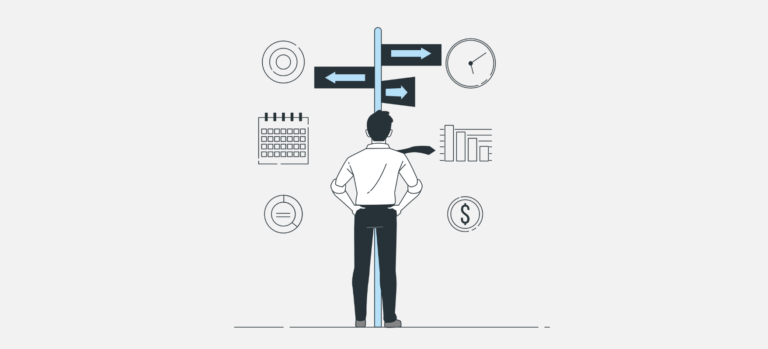Are the self-employed well covered by the Swiss system?
Switzerland’s pension system is built on the well-known structure of the three pillars, designed to ensure a decent standard of living after retirement and in times of hardship. While this system is well understood by employees, self-employed individuals are only covered by and contribute to the first pillar (AVS/AI/PC).
Fortunately, there are ways to optimize this coverage and ultimately achieve a level of financial comfort equal to—or even greater than—that of salaried workers. But it requires a solid understanding of the rules in place, the available tax advantages, and the common pitfalls to avoid. By combining state pension provision (1st pillar), voluntary participation in the 2nd pillar, and smart use of the 3rd pillar A or B, it’s possible to build a personalized strategy aligned with your risk profile and long-term goals.
Understanding the pillars of pension provision
1st pillar: compulsory basis (AHV/AI/APG)
As a self-employed individual, you are required to contribute to the 1st pillar, which includes AHV (Old-Age and Survivors Insurance), AI (Disability Insurance), and APG (Income Compensation Allowances). These insurances cover basic needs in the event of retirement, disability, or specific family situations (such as maternity leave or military service).
Affiliation to the AHV is mandatory from the start of your self-employed activity, and the contribution rate is 10% of net income, with a reduced scale for annual incomes below CHF 58,800 (as of 2025). These contributions are deductible from taxable income.
AHV 2025 figures
- The maximum AHV pension is CHF 2,520 / month
- The minimum AHV pension is CHF 1,260 / months
- The maximum determining average annual income is CHF 90,720
2nd pillar: occupational benefits (BVG/LAA)
Unlike employees, self-employed individuals are not automatically enrolled in occupational pension plans (LPP). However, they can choose to insure themselves on a voluntary basis, under the same conditions as employees, by joining the pension fund accessible through their profession, the one covering their staff, or—if no other option is available—the Substitute Occupational Benefit Institution (Fondation institution supplétive LPP).
This voluntary affiliation allows self-employed individuals to build retirement capital, benefit from coverage in the event of disability or death, and deduct contributions from their taxable income. In 2025, they can insure an annual salary of up to CHF 64,260, with contribution rates increasing with age (from 7% to 18% of the insured salary). Unlike employees, the self-employed must cover the full cost of these contributions themselves.
In addition, buy-backs are also possible to make up contribution shortfalls. These are fully deductible from your taxable income.
3rd pillar: unrestricted pension plans (3a/3b)
In 2025, a self-employed person not affiliated to a 2nd pillar may pay up to 20 % of his or her net income into a Pillar 3a, up to a limit of CHF 36,288 per year. These amounts are fully tax-deductible.
The pillar 3a also allows you to protect your loved ones (through risk or mixed insurance) and to finance the purchase of your primary residence. Moreover, an increasing number of investment options are available within the 3a framework, making it a much more flexible tool with potentially higher returns than the 2nd pillar—especially when compared to the Substitute Occupational Benefit Institution, which generally offers relatively low interest rates.
Alongside pillar 3a, pillar 3b represents flexible pension provision, with no contribution limits and no special tax framework (except in certain cantons). It is ideal for complementing existing coverage, investing in life insurance products, a life annuity, or optimizing estate planning through the beneficiary clause that falls outside of the inheritance process. Moreover, the lump-sum payout is tax-exempt if the contract meets the pension criteria.
Pension criteria
- Contract duration must be 5 years (10 years if linked to funds)
- Payment is made after age 60
- The contract was concluded before the age of 66
2nd or 3rd pillar: what's the best solution for the self-employed?
For the self-employed, the choice between 2nd and 3rd pillar mainly depends on annual income, tax strategy and retirement goals.
Advantages of 3a
The tied 3rd pillar (pillar 3a) is generally the first option to consider. It offers significant flexibility in how savings are invested: index funds, active vs. passive management, or insurance contracts with profit-sharing. This freedom can lead to better long-term returns, especially when choosing a transparent and well-structured solution. In addition, pillar 3a allows you to tailor your coverage precisely to the risks of death or disability. In 2025, self-employed individuals not affiliated with the 2nd pillar can contribute up to CHF 36,288 per year, with full deductibility from their taxable income.
Advantages of the 2nd pillar
However, once income stabilizes at a comfortable level, the 2nd pillar becomes a powerful tool—especially for those seeking lifetime income security. Unlike 3rd pillar capital, which is often received as a lump sum or limited-duration annuity, the LPP pension is paid out until the beneficiary's death. It therefore offers a level of security that few private solutions can match. In addition, the tax framework is highly favorable: contributions are deductible, and any buy-ins can fill coverage gaps while significantly optimizing your tax situation.
Combining 2nd pillar + 3a: a winning combo?
For the self-employed who want to both secure their financial future and optimize their tax situation, the combination of Pillar 2 (BVG) and Pillar 3a is clearly a winning strategy. If your income allows it, this remains the most attractive option.
By combining both pillars, a self-employed person can build a solid pension strategy—balanced between security and performance. This approach ensures coverage of key risks while allowing room for dynamic capital growth.





